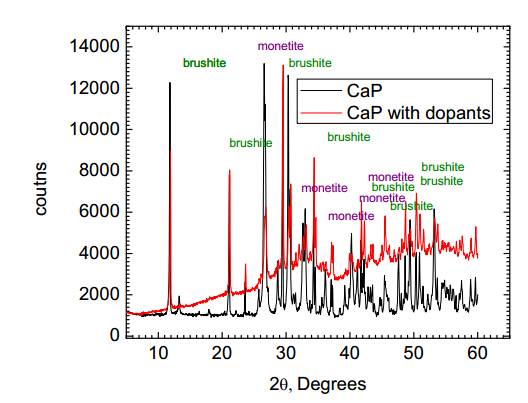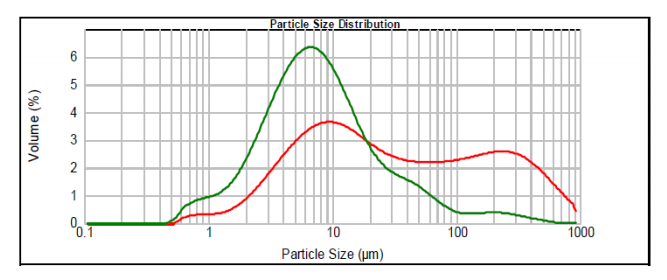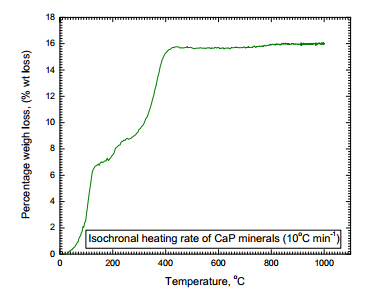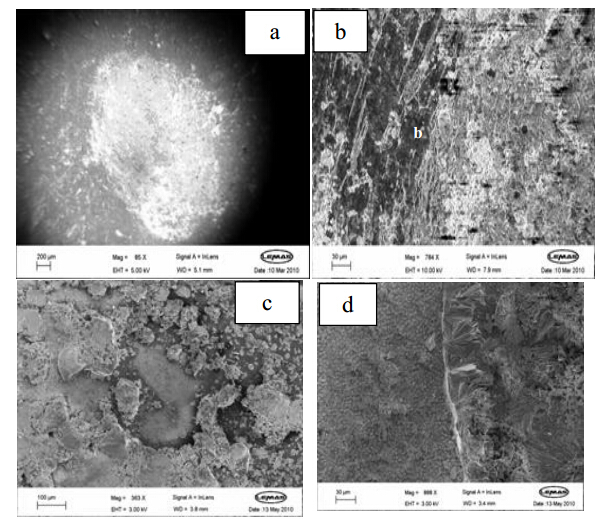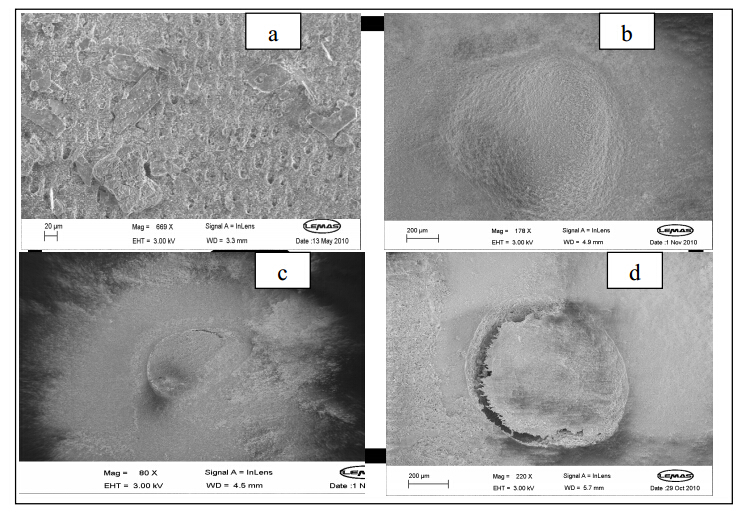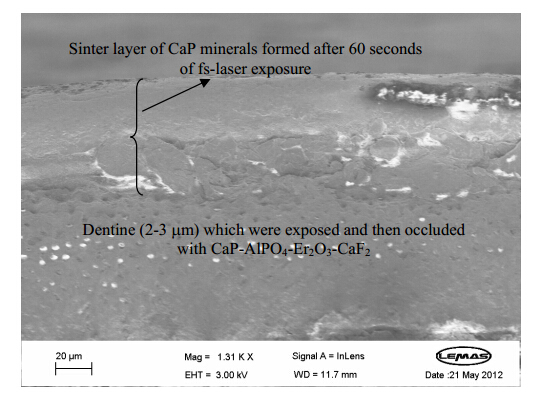1. Introduction
Tooth sensitivity is a lifestyle related condition, resulting from the exposure of dentine surface [1, 2] and eventually of dentinal tubules to the external stimuli in the oral environment. The movement of the dentinal fluid stimulates the nerves and causes pain [1, 2, 3]. Treatments for teeth sensitivity such as nerve desensitization using potassium nitrate [3], and dentinal tubule occlusion using commercial br and s of toothpastes such those containing hydroxyapatite (HAp) [4] have shown to be effective only in the short term, as the recurrence of sensitivity is commonly reported [5]. Occlusion of dentinal tubules using HAp nano particles in vitro [6] and in situ via toothpaste [4] has been reported to provide surface protection up to 90% of tubules, which might contribute to the re-mineralization at the root of dentinal tubules [4, 7]. HAp is a calcium phosphate (CaP) based apatite with a general chemical formula M10 (XO4) 6Y2 [8, 9]. In such phosphate minerals, M2+, (XO4) 3-, and /or Y- ions may be substituted, by ions with comparable ionic and molecular radii. For example, Ca2+ may be substituted by Al3+/RE3+, (PO4) 3- ions by (SiO4) 4- and bicarbonate and carbonate, and OH- by F-, respectively [9, 10, 11] for various potential hard tissue applications. The incorporation of RE3+, Al3+ and F- ions could be very beneficial in producing an acid resistant calcium phosphate composite due to their anti-dental demineralization effect [12]. For analyzing the structure of cations in calcium phosphate minerals, the diffusion of RE3+ ions into the phosphate structure was reported to occur only under heating [13].
Historically the neodymium:yttrium-aluminum-garnet (Nd: YAG) and carbon dioxide (CO2) lasers have been widely investigated for the treatment of sensitive teeth by melting dentine surface to seal dentinal tubules [3, 14], however, heat accumulation during laser irradiation appears to be the cause of structural changes and damage to dentinal tissues such as phase changes and surface cracks, respectively [15]. Furthermore, under laser irradiation, the RE3+ ions have the ability to absorb the energy of photons and emit photons at longer wavelengths and as heat through phonon vibrations [16]. It is unknown at present in the context of dental mineral modification whether any benefit might be reaped by utilizing heat and photons from RE-ion de-excitation.
In the present investigation the use of a photosensitive calcium phosphate mineral is investigated for the analysis of large surface area for occlusion of exposed dentinal tubules. In a related investigation, we reported the method of mineral synthesis and characterization for achieving rare-earth (RE3+, e.g. Er3+), Al3+ and F- ions in calcium phosphate (brushite, CaH(PO4).2(H2O) and monetite, CaHPO4) mineral phase mixture [17]. The F- ion doping imparts acid-resistance by replacing the OH- ions in the structure [11]. We also focused on forming a calcium phosphate phase mixture which is more stable below pH = 6, under which condition, the hydroxyl apatite (HAp) is a chemically unstable mineral [18]. Finally, unlike monetite and brushite, the needle-shape HAp offers only limited the surface occlusion, as it relies on the morphology of the aggregated minerals for blocking the dentine tubules [6]. By reviewing literature there appears to be no report on any microstructural comparison of laser irradiation induced physical changes.
2. Materials and Method
2.1. Powder Synthesis
The synthesis of mineral powder was carried out at room temperature using 0.1 molar concentrations of calcium nitrate tetra-hydrate Ca (NO3) 2.4H2O and di-ammonium hydrogen phosphate (NH4) 2HPO4 (Fisher scientific) in distilled water in 160 mL volume. These two solutions were mixed by stirring while adding di-ammonium hydrogen phosphate solution drop-by-drop into the calcium nitrate tetra-hydrate solution to yield a calcium phosphate suspension with a molar ratio of Ca: P which was maintained in the range of 1 to 1.67. In one batch of synthesis, only calcium phosphate suspension was formed. However, by incorporating analytical grades (Fisher Scientific) of powders of rare-earth erbium oxide (Er2O3), aluminium phosphate (AlPO4) and calcium fluoride (CaF2) into the stock solution of (NH4) 2HPO4 and Ca (NO3) 2.4H2O solution, the doped calcium phosphate mineral was synthesized. The concentration of each dopant in the stock solution was equivalent to 5 mole percent. After incorporating these crystalline materials, the resulting slurry was then stirred for 1 hour at a speed of ~ 400 rpm, producing a milky mixture, which was then left to st and by at room temperature for 24 hours. During this period the solution was covered with a polyethylene film (cling wrap) for minimizing the absorption of atmospheric CO2. Finally, the wet precipitate was collected and dried in an oven at 80 ºC for up to 36 hours in air. The synthesized materials were analyzed for phase and morphological analyses.
2.2. In Vitro Sample Preparation
Cross-section of cleaned bovine incisors and extracted and g-ray irradiated human molars with ~1-2 mm in thickness were prepared by carefully grinding and polishing. These tissue samples were obtained from the Leeds Dental Institute. The sections were then etched with 35% w/v phosphoric acid solution in a stirred bath to remove the natural smear layer and smear plugs. Figure 1a shows the high magnification SEM image showing the micro-meter scale capillaries, called the dentinal tubules. The polished dentine tubule sections were dehydrated using alcohol/water mixtures containing 50%, 70%, 90% and 100% absolute ethanol for 30 minutes in each mixture, in order to minimize the shrinkage of tissue via evaporation of alcohol and water. The cross-sections of human molar tissue were finally left for drying for 24 hours. The dip and extraction method of coating [17] was found to produce a non-uniform coating thickness, and as a result it was necessary to fine grind 5 wt% of synthetic calcium phosphate mineral into a 50 mL ethanol to make thicker coating material having consistency of a toothpaste gel which was then applied over sectioned molars using a very fine paint brush. The manually coated human molars were left for drying via natural evaporation of ethanol, before laser irradiation. In this investigation, for comparative studies, the pressed pellets of calcium phosphate mineral were also examined for the densification mechanism in the pulsed and CW laser sintered minerals.
2.3. Laser Irradiation experiments
Laser irradiation experiments were carried out in two wavelength b and s at 980 nm and 1520 nm, both of which overlap with the corresponding ground state absorptions (4I15/2→4I11/2 and 4I15/2→4I13/2) of Er3+ ions [19, 20], chosen as the photo-active component of in the mineral phase. The chosen laser sources were: a 980 nm laser continuous wave (CW), a 1520 nm CW laser, and a 1520 nm was a 120 fs pulsed source. The fs-pulsed source was with the output power of 130 mW and a repetition rate of 2.5 GHz, implying that the 2.5 billion pulses per second were incident at the focal spot and each of these pulses interacted with mineral for 120 fs, leading to mineral phase modification. By comparison, the output powers of the 980 nm and 1520 nm CW lasers were at 150 mW. Since the ground state absorption at 1520 nm (from overall ground state 4I15/2→4I13/2 optical transition) is much smaller than at 4I15/2→4I11/2 [20], the Er2O3 doped minerals and glass absorb much smaller fraction of CW laser energy at 1520 nm than that at 980 nm. This is because of a resonant condition at 4I15/2→4I11/2. By comparison, in a 1520 nm fs pulsed laser, the average power was 130 mW. Synthetic minerals coated hard enamel surfaces and pressed mineral pellets were irradiated between 30 seconds to 300 seconds in this investigation. For temperature measurements during laser irradiation, a chromel-alumel thermocouple was attached on to the back face of coated and uncoated molar cross-sections for recording the temperature. We point out that in our investigation as the laser stage was not equipped with the motion controller for rastering the entire molar surface for irradiation induced phase change and densification, the power delivery was always referred to a fixed spot size of 250 mm in diameter for which the pictorial examples are shown below.
After laser irradiation, selected human molars were tested for hardness measurements using the Vickers Hardness technique, and the preliminary data on surface hardness of exposed dentine and molar with synthetic enamel mineral are compared below.
3. Results and discussion
The laser irradiated cross-sections of human molars and incisors and calcium phosphate pellets were characterized using a FEGSEM electron microscope with an energy dispersive X-ray analyzer. The technique allowed us to compare the effects of the physical changes on phosphate particles and the occlusion of dentinal tubules. Since the residual absorption at 1520 nm wavelength is much less than that at 980 nm, we focus on recording temperature changes only using a 980 nm CW laser.
Table 1. Temperature change ΔT (°C) measured during 980 nm CW laser irradiation on uncoated and coated molar sections. Total laser irradiation time was 5 minutes. Section thickness= ~1mm.
| sample | Temperature change (ΔT, °C) measured during CW laser treatments. Error ± 0.5 °C |
| Initial Temperature, T1, °C | Final temperature T2, °C | ΔT (T1-T2), °C |
| Tooth section | 22.8 | 26 | 3.2 |
| Tooth section coated with calcium phosphate without Er3+ ions | 22.8 | 24.9 | 2.1 |
| Tooth section coated with calcium phosphate with Er3+ ions | 22.8 | 23.2 | 0.4 |
As shown in Figure 1b, the synthesized mineral particulates have platelet morphology, with an average of 10-15 µm in two large dimensions. The thickness was estimated to be sub micrometer. The X-ray powder diffraction data (Cu Kα radiation) for the minerals with and without dopants are compared in Figure 2, in which the dominant phases are burshite (CaHPO4.2H2O) and monetite (CaHPO4), with less than 5 phase volume percent of hydroxyl apatite mineral. The details of crystal structure analysis are reported elsewhere [17]. From Figure 2, it is evident that the presence of dopants in mineral enhances the background due to the presence of amorphous phase. It is likely that the intensity background might have been enhanced due to the presence of Er3+-ions in the mineral phase, which has a more complex electronic structure than the lighter elements in the mineral.
In Figure 3, the particle size distributions of synthetic doped (red) and undoped (green) minerals are compared, from which it is apparent that the undoped mineral largely appears single modal, with three satellite distribution peaks below 1 mm (16 vol%) and 30 mm (25 vol%) and 200 mm (<10 vol%), and the remaining volume percent belonging to the main peak centred between 6 and 7 mm. By comparison, the particle size distribution in doped CaP (red curve) in Figure 3 is predominantly bi-modal, with peaks centred around 10 mm and 200 mm. In this case, the sub-micrometer volume percent, relative to the bi-modal distribution, appears comparatively less (<5 vol%) than the undoped m ineral size distribution curve. Comparing the particle size distribution data with the SEM microscopic data in Figure 1b, we find a satisfactory morphological comparison, showing that the particulate surface area varies from 5 µm2 to 150 µm2. Besides these crystalline phase mixture, the unreacted CaF2, AlPO4 and rare-earth oxides were also homogeneously distributed and were present in less than 10-15 volume percent. The platelet-like morphology of calcium phosphate minerals appear to be beneficial, not only in the occlusion of dentinal tubules but also in enhancing the heat transfer during laser irradiation. This morphology is desirable for reducing the risk of soft tissue damage in the dentine tubule structure.
In Figure 4, the percentage weight loss under isochronal heating condition is shown for a pellet formed from doped calcium phosphate powder. It is apparent from this Figure that when mineral is heated it loses more than 50% of its weight by 300 °C, and almost 95% of weight loss occurs by 400 °C. Above 400 °C until 1000 °C, the remaining weight loss occurs. This weight loss data might help in the analysis of structural changes in minerals, as a result of laser irradiation which is absorbed by the mineral and partly turns into heat.
The effects of irradiation of CW lasers at 1520 nm on undoped CaP mineral surface were first carried out onto pressed pellets of ~1mm in thickness for 1 minute, after which each exposed area was examined under SEM for morphological changes, as shown in Figures 5a and 5b. The examination of surfaces in undoped and Er2O3-doped CaP surfaces for longer than 1 minute (not included here) of CW irradiation using the 980 nm and 1520 nm lasers reveal that there was little evidence of any apparent melting. However, when the mineral doped with Er2O3 only and that doped with Er2O3, AlPO4, and CaF2 was coated over exposed dentine and irradiated for 5 minutes using a 980 nm CW laser, it was apparent that the 980 nm CW laser was promoting more superficial melting than that using a 1520 nm laser.
The resulting liquid formed and spread slowly over the surface of exposed dentine. The spreading behaviour of melted liquid on laser irradiation was more apparent when mineral phase was mixed with CaF2, as compared in Figures 5c and 5d. In Figure 5c discontinuous melting is evident in Er2O3 doped calcium phosphate, whereas the presence of CaF2, AlPO4, and Er2O3 in CaP resulted into more continuous regions of melting which solidified with ridge-like feature and rosette-like crystals in Figure 5d. It may be concluded that after 5 minutes of laser irradiation of minerals incorporated with CaF2, AlPO4 and Er2O3 yielded more uniform melting and spreading than that without CaF2.
Since the melting induced surface modification using 980 nm CW laser requires at least 5 minutes over 100‒250 mm2 area, it was decided that for clinical application such an approach might prove too slow for ultimate treatment. It was therefore necessary also to compare the response of these minerals when irradiated with an ultra-fast laser (120 fs, 130 mW). Since a femto-second laser at 980 nm is currently not available, we investigated the structural changes using a fs-1520 nm laser only. Figure 6a is the surface of dentine which was coated with doped CaP mineral. In Figures 6b, 6c and 6d, the SEM analysis of microstructural changes are analyzed for surfaces irradiated with 1520 nm fs-pulse lasers over 30 s, 120 s, and 300 s, respectively. As explained above, since the laser focal spot was fixed during short period of mineral irradiation which meant that at the focus all the incident energy was concentrated over a small area. In contrast with the CW laser experiments on pellets, discussed above in Figures 5a to 5d, the irradiation with the 1520 nm fs-pulse laser for periods between 30 s and 300 s exhibited better interaction with mineral, resulting in a more uniform densification and occlusion of dentinal tubules in and around the laser irradiated area, as exemplified in Figures 6b to 6d. The scale of structural modification extends 3 to 5 times beyond the dimension of focal spot (250 mm), and is in sharp contrast w ith the melting and crystallization type of features in Figures 5c and 5d.
The fixed focussing of laser at one point during irradiation leads to high energy density, which is the ratio of average power (130 mW) divided by the beam focal area (250 mm2), producing a crater-like feature by displacing the materials sideways via a wave-assisted displacement, as is observed during a classical semi-plastic/plastic material flow. The typical behaviour of materials flow under laser irradiation was verified by repeating the irradiation experiments with pressed mineral pellets and human molars, in order to analyze a large cross-sectional area between the natural and the synthetic enamel minerals, and then comparing the data with that for human molar. Figure 7a is a cross-sectional image before fs-laser sintering which can be distinguished from the microstructure after sintering, as shown in Figures 7b and 7c.
The superficial melting is apparent from the microstructure in Figure 7c which is at 10x lower magnification than the micrograph of unsintered pellet in Figure 7a. In Figure 7b around the light grey regions of sintered pellet we also observe a ridge of finer materials which was deposited via the acoustic vibration generated during fs-laser irradiation.
Figure 8 shows the cross-sectional microstructure of dentine with a 1520 nm fs-laser-sintered overlayer of doped mineral which has formed after 60 seconds of irradiation, yielding roughly 50 mm thickness over the dentine.
The preliminary measurements of micro-hardness of the occluded surface was performed after 5 minutes of irradiation using a 980 nm source, as shown in Figure 5d where we had observed localized melting and formation of rosette-like crystals. The measured hardness of melted and solidified mineral over occluded dentine was 1100 MPa, when compared with data for exposed dentine surface which was 240 MPa. The increase in hardness with respect to exposed dentine surface confirms the restoration of enamel by occlusion. Detailed material structure and adhesion characterisation for CW and fs-laser are under investigation and will be reported in future.
4. Conclusion
The present study reports the results of a research methodology for the treatment of tooth sensitivity by analyzing the microstructures of post laser-mineral interaction. In this study on enamel mineral resurfacing using lasers, the photo-active Er3+-doped calcium phosphate mineral phase was mixed with AlPO4 and CaF2. It was observed that using a 980 nm CW laser power (150 mW) the CaF2 containing mineral melted and solidified over a period of 5 minutes of irradiation. The effect of melting was less apparent when a 1520 nm CW laser was used. By contrast, the effect of irradiation using a 120 fs-pulsed laser at 1520 nm has a dramatic effect on mineral densification, which was achieved within 60 seconds. The densified laser, as shown in Figure 8, appears to be 50 mm thick.
Acknowledgements
The authors of this paper acknowledge the financial support from the RCUK funded Basic Technology (EP/D048672/01) and EPSRC/TSB supported Integrated Knowledge Centre projects, which were essential for generating the data.
Conflict of Interest
The authors declare there is no conflict and interest.









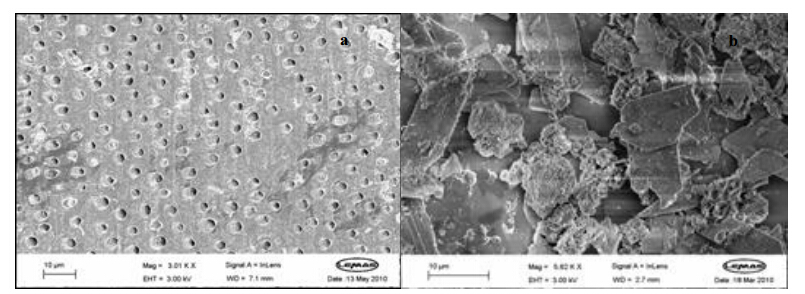
 DownLoad:
DownLoad: 